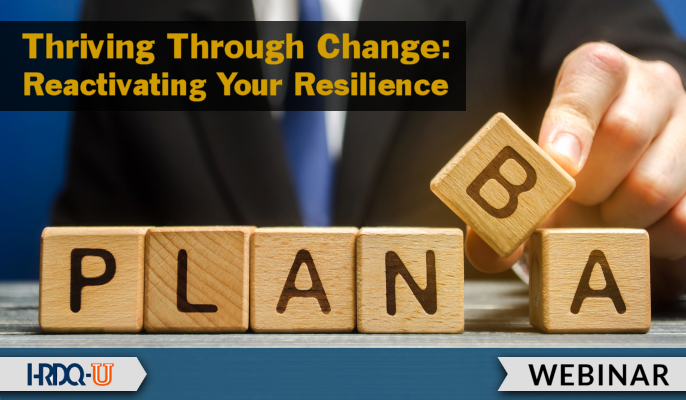- 827 Lincoln Ave. #B-10 West Chester, PA 19380
- support@hrdq.com
- +1-610-279-2002
Quick Links
Menu
Featured Topics
Menu
Total Results
We could not find what you're looking for. Please try again.No Record Found

We are all on a journey across a rugged landscape, more unpredictable and challenging than ever before. Many people are feeling threatened in ways that set off strong reactions, leading to resistance and fear. You are not alone in feeling overwhelmed, confused, burned out, and stretched. Everyone is looking for ways to make sense of all this change and help themselves, their teams, organizations, communities, and families thrive. We need to remember that we are already resilient and can benefit from a refresher about what people who do well do when faced with disruption and change.
This webinar will provide you with a map and compass that will help you thrive as you navigate change, challenges, and resilience at work.
You’ll explore the 5-Point Resilience Compass.
This compass shows you a path in your life and your work. You’ll apply these mindsets and behaviors to your current challenges and regain momentum for living and resilience at work more skillfully.


If individuals in your organization are having a difficult time adapting and adjusting to organizational change, Mastering the Change Curve is your remedy. Participants will learn how to shift their focus from the past to the future and handle change with ease.
Get 15% OFF with code CynthiaS15
Dr. Cynthia Scott is the Founder of ChangeworksLab, and has focused her work on supporting leaders to create conditions where change is easier and sustainable. She is focused on how we can create resilience to move into a regenerative future. Cynthia has been a lifelong social entrepreneur, consultant, and author, applying behavioral science to help individuals and organizations thrive. Her pioneering programs, models, and tools have helped to accelerate adaption to change and transform cultures to help people thrive. She has provided thought leadership in the areas of personal and organizational change, burnout prevention, and personal performance improvement.
Training Tools for Developing Great People Skills
This event is sponsored by HRDQ. For 45 years HRDQ has provided research-based, off-the-shelf soft-skills training resources for classroom, virtual, and online training. From assessments and workshops to experiential hands-on games, HRDQ helps organizations improve performance, increase job satisfaction, and more.
Learn more at HRDQstore.com

Sign up to be notified of upcoming live webinars, in-depth workshops, podcasts, blog posts, promotions and much more. Stay ahead of the curve and subscribe for FREE today!